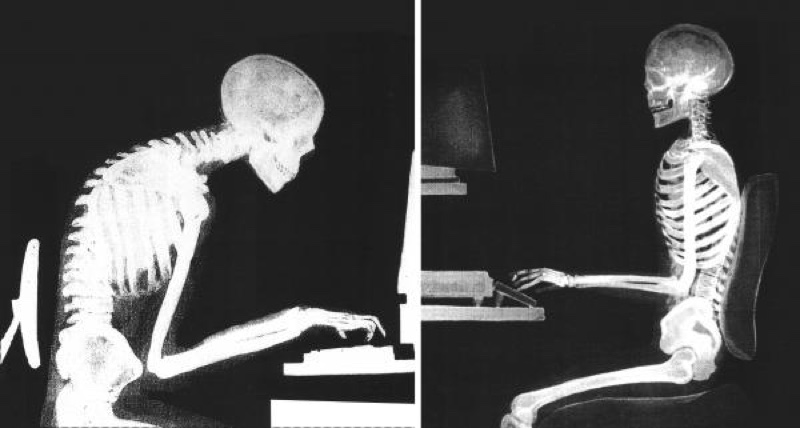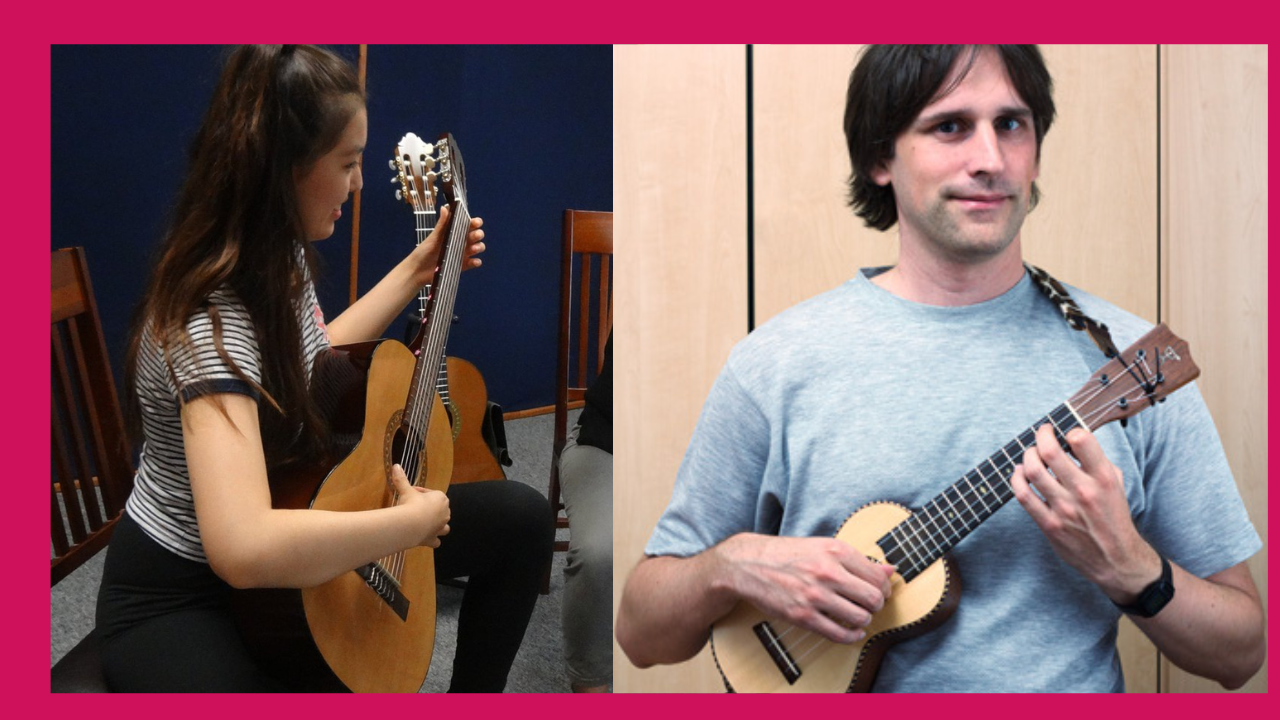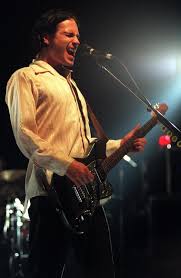Most people struggle with singing and playing an instrument at the same time. But we just love singing, and we love playing, so of course we want to figure this out.
It would be great to be able to sing and play guitar, piano, or ukulele, whatever your favorite instrument is. Many of us even have that campfire fantasy: to just take our instrument out, play, and sing for the fun of it.
This article is part of my Singing Techniques guide, where I explore the skills that make singing easier and more expressive. Here, we’ll zoom in on one specific challenge: how to coordinate your voice and your instrument. I’ll share my experience and the insights that help singers finally connect the two… and it’s not necessarily what you’d expect.
The non-sexy (but effective) way to play and sing at the same time
We don’t want to admit it, but the simple truth is sometimes too simplistic, maybe even boring. In this case, the answer is boring, but the execution is not.
You can build up your skill to play and sing at the same time by taking it step by step. Here are the steps and the reasons you need them:
-
- <li “=”” dir=”ltr” tve-u-188768ce46f”=”” style=””>
Establish the playing without the singing
Multitasking has never been my favourite thing nor my strong suit. So I avoid it when I can. Unless you have the gift of sight reading and you can multitask things you haven’t mastered yet – you need to take some time to know what you are playing. And feel confident in it, at least to some degree, then you add another endeavour to the mix.
- Establish the singing without the playing
When you sing and play, you can’t really focus on the quality of your singing. Especially if you are trying to improve you singing, or overcome a certain vocal difficulty in the song – you could use some concentration on the voice itself.
- Combine singing and playing one verse/chorus at a time
This is a pain in the butt, this one. You can’t just do the whole song right away! Why not? Well, because then that means you can already play and sing and you don’t need to be reading this. If you need help with this coordination – you also need to break the song down. Focus is magical, believe me, it will take you far.
- Start slowly and gradually speed up
It is psychologically difficult to slow down. But ironically, it will go much quicker that way. If you try to attack it all at once, well, it’s not gonna work. I can’t prove this to you, I don’t have a research for this. But you will proof it if you try it 🙂
Ok, you are annoyed with me now, I get it. Really? That’s the best you’e got? No magic tricks? Wait for it, this is just the beginning.
The sexy way to sing and play at the same time
So you have sort of a baseline of confidence in your guitar/piano/uke part, and you have practiced some singing without the instrument. Now it’s time to make the two elements work for each other.
How about I teach you to:
- Use your musical instrument to check your posture
- Use your musical instrument to enhance your singing resonance
- Use your musical instrument to get comfortable in your voice
Interested? OK here we go.
Use the instrument to check your posture
When we sit down to an instrument to play and sing simultaneously, we tend to lean forward, hunch and get tension around our throats. Good luck singing freely that way.
But we can take advantage of our new position to assist our vocal alignment. How? Use the instrument as your reference point. Here’s the guide:
Piano
A bit of Alexander technique could help here. Use these directive thoughts, do not try to actively fixate your body parts to stay in place:
Sit with your lower and upper legs are 90 degrees (it’s ok if the right foot needs to go forward a bit for the pedal). Same with your upper legs&torso. Elbows relaxing downwards, back of the head goes up and away from the keyboard, Chin towards the keyboard.
So you use the piano/keyboard as a reference point to get a nice long open singing instrument! Like in this neat x-rays:

Left skeleton is hunched over. Right Skeleton is doing it right!
“Use your instrument as a reference point to align your posture, enrich your vocal tone and ease your high notes”
Tip while singing: let the chin drop, on every note if possible, towards the space between the keyboard and your torso.
Singing while playing guitar
Feel your sit bones in the chair, or feel your heels in the ground if you are standing. Let your chin point down towards the border between your body and the body of the guitar/uke.
Do not go with your head in front of the body of the guitar! That will cause neck tension. Let the back of the head go away from the guitar/uke. This might feel like you are looking over a cliff.
It looks something like this:

Tip while singing: let the chin drop, on every note if possible, towards the space between your body and your guitar.
Want to get comfortable performing?
I have a stage course
With immediate access to a performance platform
Here is a great example of a master at work – Jeff Buckley. The legendary (and sadly late) performer knew exactly how to be aligned while playing the guitar, and look how this jaw drops online roulette echtgeld!

You can learn more on posture in my article about Alexander Technique.
Bonus tips for singing and playing guitar
I came across a good article dedicated to playing guitar and singing at the same time.
I saw some interesting complementary points:
- Practice each element separately: ‘Before combining singing and playing, it’s crucial to have a solid understanding of both the guitar and vocal parts individually.’
- Coordinate rhythm and timing: ‘You want to build a very strong sense of rhythm throughout your entire body. […] Once you you have established a steady sense of rhythm, gradually introduce your vocals.’
- Simplify chord progressions: ‘Complex chord changes can make it difficult to sing and play simultaneously, especially for beginners. If you are struggling with some of the chords used in a particular song, then you can simplify the chord progressions by using basic open chords or even power chords.’
On a side-note, I found a blog post about the process of mastering guitar chords. It will give you more info on breaking down the learning process of chords. It shares similarities with my own approach of mastering your vocal instrument.

“
Playing and singing at the same time isn’t about doing two things at once. It’s about letting your hands and your voice learn to dance together.”
Use your instrument to enhance your singing resonance (better tone)
Sometimes playing and singing at the same time can cause one to try too hard, in a non-helpful way. Because we are multitasking two different endeavours. It takes concentration and coordination (that, frankly, not everyone has naturally, I know I don’t).
So framing the two missions, playing and singing, as one task in your mind, can help ease the task – and there is a side bonus: it will make you sound better! Here’s how:
Piano
When you sit at the piano and get ready to sing, think of inhaling in the direction of underneath your chair. Alternatively, you can imagine the piano filling up with air!
Then, when singing, fill up the space of the piano/under the chair with your sound (in your mind, of course, this is a brain trick).
Guitar/Ukelele
When you inhale, think of the air filling up the body of the guitar/uke, or the space in your body which is behind the guitar/uke.
Then, while singing, have the image of your sound filling the space you first filled with air.
About the author

I’m Linor Oren, founder of SingWell. I have an opera background and in the past I’ve performed on stage. I’ve taught hundreds of students how to find their authentic voice. What I’ve learned is that singing isn’t about being “born with it” — it’s about unlocking what’s already inside you with the right tools and guidance. My passion is helping singers at every level grow in confidence, technique, and joy, so they can sing with freedom and expression.
What are you talking about, Linor? Why is this even helpful?
This is a bit weird, granted, but this trick will make you breathe deeper without lifting your chest/shoulder muscles too much. As a result you will have more open resonances in your body and your tone will be richer. Try it!
Use your instrument to get comfortable in your voice
This will work similarly for all instruments.
Before singing and/or playing, establish the feeling of your sitting bones in the chair (or your heels in the ground, if you’re standing).
While singing, especially higher notes, imagine the sound going towards your sitting bones or heels. This goes hand-in-hand with the dropping of the jaw we talked about above in the posture section. The jaw drops downwards, so does the sound. It’s a trick – give it a wirl.
What this does
This action of pretending your sound goes downwards distracts you from thinking of the sound as being made by the upper part of the body, which tends to cause straining.
The sound is made by almost your entire body! So use the instrument you are playing to get the sensation of your whole body, and it will help you relax your muscles that would otherwise work to the detriment of your voice.
No longer a little mouse…
Maybe you feel it’s time to stop shushing your own voice and take your desire to sing serious. My weekly ‘Belting Mouse’ mail shows you how. It gets you on track with stories and insights from my life as a singer and that of my students.

For ‘little mice’ who are tired of squeaking and want to start belting…
What’s next?
Once you start coordinating your voice and your instrument, the next step is to strengthen the foundation behind it. Good posture, breath support, and vocal stability make it much easier to keep both elements in sync. To dive deeper, check out my Breath and body for singing guide for exercises that free up your body and give your voice the support it needs. And if you want to explore more skills like singing in tune, resonance, or vibrato, head over to my full Singing techniques guide.
Frequently Asked Questions
Why is it so hard to sing and play an instrument at the same time?
Because your brain is trying to control two separate rhythms at once. Singing has its own timing, phrasing, and breathing pattern, while your hands follow a different rhythm. The key is to make at least one of them automatic first, so your focus can shift smoothly between the two.
Should I practice singing and playing together right away?
Not yet! Start by practicing each part separately. Get comfortable with your chord changes or accompaniment before adding your voice. Then, begin with just one verse or chorus. It may feel slow, but this step-by-step approach will actually get you there faster.
How can I make my singing sound better while playing?
Use your instrument to help your voice, not fight it. Align your posture with your instrument, let your jaw drop freely, and imagine your sound filling the body of your guitar or the space beneath your piano. These small shifts create more resonance and ease in your tone.
